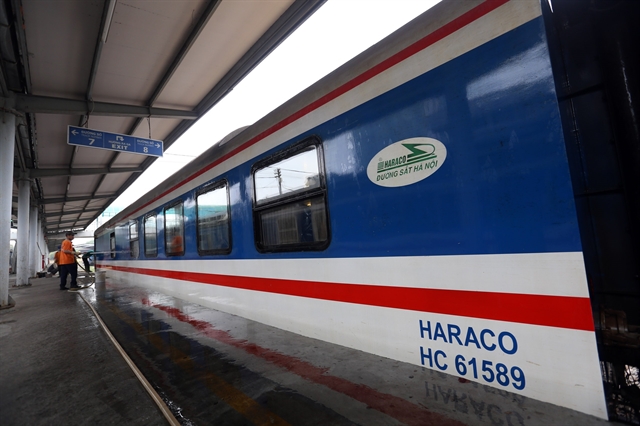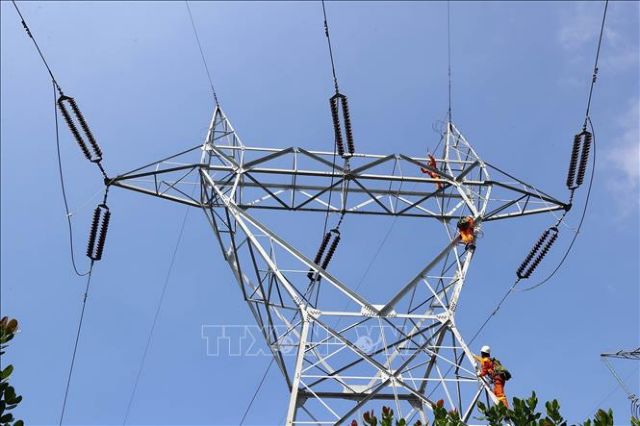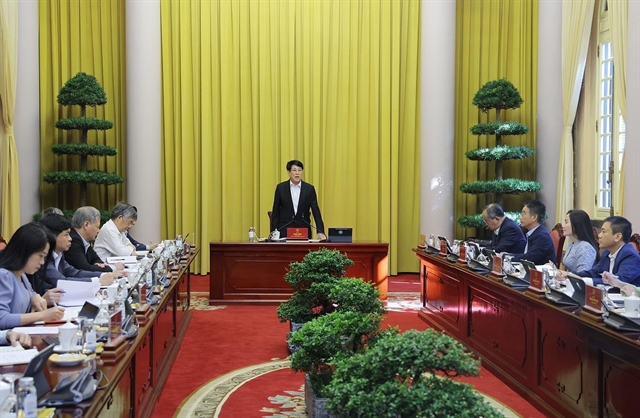 Economy
Economy


|
| The market share of rail transport is low, while the competitiveness of railway enterprises is weak. — VNA/VNS Photo |
HÀ NỘI — Railways continue to face a stern challenge within the transportation market, not solely due to outdated infrastructure, but predominantly owing to their lack of competitive edge and inefficiencies in organisational structure, with a particular emphasis on the transportation sector.
The Commission for the Management of State Capital at Enterprises (CMSC) has recently presented a report to Deputy Prime Minister Lê Minh Khái, seeking approval for the scheme to reorganise the Vietnam Railway Corporation (VNR) by the year 2025.
This scheme, originally formulated in 2016, has undergone multiple revisions and submissions, yet has not received approval. This delay is partly attributed to the transfer of responsibility for the railway 'behemoth' to the CMSC in November 2018, resulting in a backlog of tasks requiring clarification.
It was only after the Prime Minister released Document No 303/TTg-ĐMDN in April of the previous year, outlining the strategy for restructuring enterprises under the VNR, that a fresh direction for the entire sector began to emerge.
Market share falls
In the execution of this document, VNR has streamlined its rather unwieldy structure, reducing the number of focal points within the locomotive enterprise branch from five to three, transferring the status quo of all ongoing activities, assets, and personnel from the three railway management boards of Area 1, 2, and 3 to a single railway project management board. This board is tasked with performing the role of investor representative, overseeing railway projects financed by VNR, whilst also concluding the operations of the other two project management boards.
As it stands, the only remaining task is to amalgamate the Hanoi Railway Transport JSC (Haraco) and Saigon Railway Transport JSC (Saratrans) into a single joint-stock company.
Reflecting on the performance results from 2016 to 2020, the CMSC reports that the average targets, as outlined in the strategy, production and business plan, and five-year development investment plan for this period, have largely not been met. This includes the annual listings of group A and B projects.
The rail transport market share remains low, railway enterprise competitiveness is frail, and the proportion of non-public output from railway maintenance management joint stock companies is not substantial.
Additionally, the quality of industrial products is merely satisfactory, railway infrastructure continues to be outmoded, and the solidity of railway traffic safety is questionable.
Over this period, the entire corporation achieved a total revenue of VNĐ38.6 trillion, with an average pre-tax profit of VNĐ149 billion per annum. This does not take into account the loss of over VNĐ1.3 trillion in 2020, a direct consequence of the severe repercussions of the COVID-19 pandemic.
The amount paid to the state budget from fees and charges is VNĐ1.48 trillion, ensuring fulfilment of obligations to the State.
Prominently, the organisational structure of VNR throughout this period has manifested numerous shortcomings, including internal rivalry and the dispersal of resources owing to the inability to divest capital from certain joint stock companies. This is in conjunction with a sizeable workforce yet low productivity, as assessed by CMSC.
Additionally, due to unprofitable operations, VNR recently augmented its charter capital to VNĐ3.1 trillion, which is VNĐ146 billion lower than the approved capital. This is primarily attributed to the adverse effects of the pandemic; as a result, VNR has not yet balanced its capital sources.
Moreover, there are issues related to the mechanism for deploying capital from the budget for maintenance and investment in developing railway infrastructure. The investment capital from the budget dedicated to railway infrastructure development trickles down at a mere 2 – 3 per cent of the entire industry.
Furthermore, the project concerning the management, utilisation, and exploitation of the national railway infrastructure, financed by the State, has yet to receive approval from the Prime Minister.
VNR restructuring project
In a bid to implement the restructuring of businesses and units after missing the scheduled restructuring for the 2016 - 2020 period, VNR is finalising the restructuring project for the 2021 - 2025 period, with plans to submit it to the Prime Minister for review and determination.
Significantly, as highlighted by the CMSC, once the merged entity is operational, VNR intends to assess one - two years of actual operations before exploring strategies to diminish the controlling ratio at the transport joint stock company. Concurrently, there will be a focus on specialising in freight transport businesses and passenger transport businesses.
On this matter, the Tạp chí Kinh tế Việt Nam (Vietnam Economic Times) Online Magazine relayed statements from VNR’s leadership, asserting their prompt directives to the representatives of VNR's capital contributions at the two companies. The objective is to devise plans for consolidation, including establishing the charter capital of the joint-stock company post-merger, valuing the enterprise, determining the share exchange ratio between the two railway transport joint stock companies, and devising an accounting plan for merging the financial books of two enterprises that have accumulated losses.
Furthermore, VNR is laying out a roadmap to create a distinct subsidiary, dedicated solely to the railway freight transport business. This involves division and separation of organisation, labour, capital, and assets. VNR will conduct this study and seek advice from the CMSC and the Prime Minister, aiming for implementation at a suitable time in the next stage.
Additionally, within this project, VNR is advocating for the complete divestment of all state capital held in 13 joint stock companies, in accordance with Decision No 198/QĐ - TTg.— VNS

 - QUẢNG TRƯỜNG ĐỘC LẬP.JPG)


